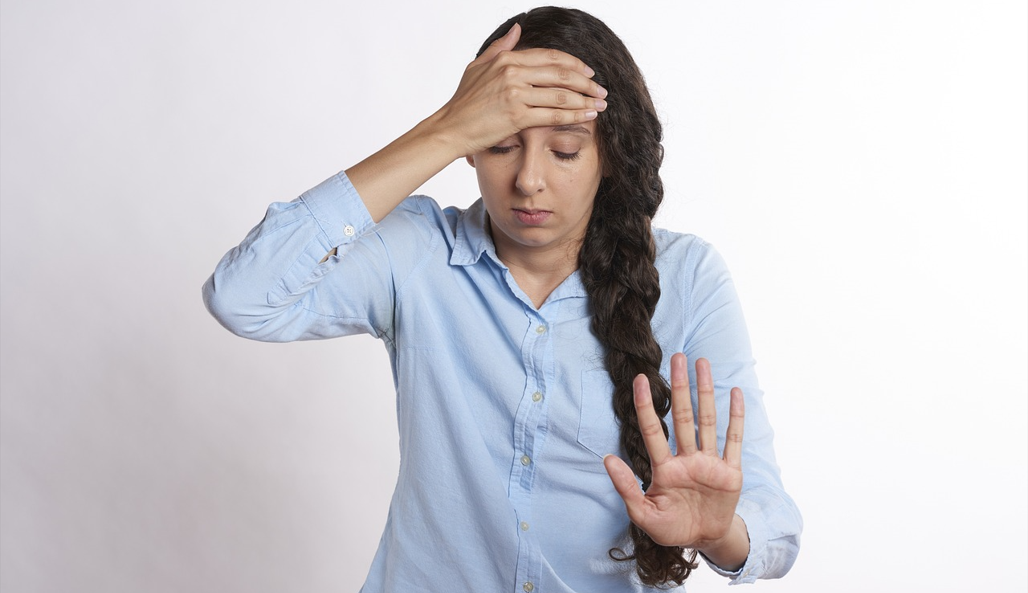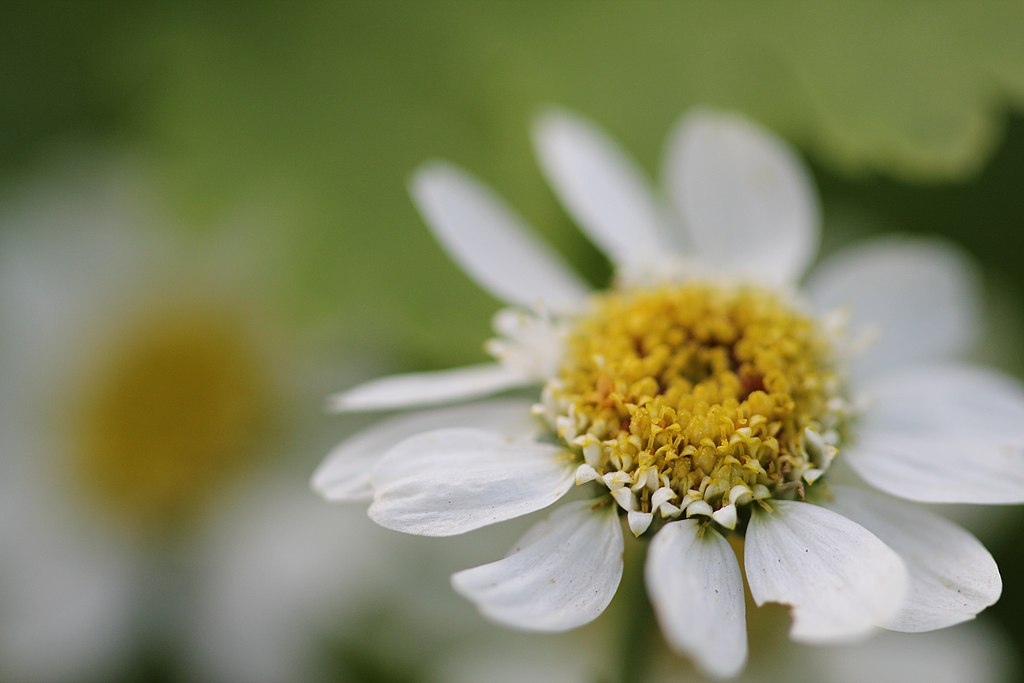Headache symptoms are common physical ailments that can range from annoying and mild, to debilitating, greatly impacting your quality of life. They are caused by the stimulation of nerve endings and vessels in your head resulting in pain, throbbing, and pressure.

It’s important to recognize headache triggers, symptoms, and appropriate sources of natural relief. And that is what we’re talking about today.
But first, please know that if your headache persists or becomes severe, it’s important to seek medical attention.
With that said, let’s dig in to the common types, symptoms, causes, and herbal remedies that work in place of NSAIDs…
Common Headache Types
- tension headache [1]
- migraine headache [2]
- cluster headache [3]
- sinus headache [4]
- headache with other symptoms [5]
Common Causes of Headache Symptoms
- stress
- dehydration
- poor posture
- eyestrain
- an underlying medical condition like sinusitis or a cold
Knowing what is causing your headache can help you identify the best way to manage it.
Common signs that the headache is caused by one of these factors include:
– headache with neck pain
– triggered by emotions (e.g., stress)
– associated with body movement
– that is worse when lying down
– related to vision problems such as blurry vision
– accompanied by a fever or a runny nose, etc.
There are several natural ways to treat headaches without taking medications like NSAIDs…
- drink plenty of water
- get enough sleep and exercise
- use headache specific essential oils like peppermint or lavender
- use headache specific herbs like feverfew or white willow
- try acupuncture treatments
You may also find it helpful to practice relaxation techniques such as yoga and mindful breathing to reduce headache symptoms.
(More on remedies later in this article ↓)
In some cases, you should see a doctor for headache treatment if the headache is severe, recurrent, or accompanied by other symptoms such as confusion or fever. A doctor can help you identify possible causes and treat headache appropriately.
Headaches are a common physical ailment that can have a significant impact on your quality of life.
It is important to learn how to recognize headache triggers, practice healthy lifestyle habits, and be aware of the warning signs of when to seek medical attention. With this knowledge, you can manage headache and find relief naturally.
Next, let’s look into the symptoms of the different types of headaches, and the locations – where you’d feel the pain…
1. Symptoms of a Tension Headache
Tension headache, sometimes called stress headache or muscle contraction headache, is the most common type of headache.
It typically causes a mild to moderate aching sensation that radiates from the neck and spreads throughout the head. It can last for a few hours or several days.
Location: A tension headache is a common headache type and can cause pain or pressure on both sides of the head. The feeling of pain may be distributed across the head or felt in a band-like sensation around the head.
Some key signs you have a tension headache include:
- Dull, aching pain
- Sensitivity to light and noise
- Difficulty concentrating due to headache symptoms
- Tiredness or fatigue
If you experience these signs, it is important to make lifestyle changes such as getting enough sleep and relaxation, eating a healthy diet, reducing stress levels, and drinking plenty of water.
2. Signs You Have a Migraine Headache:
Migraine headache is a type of headache characterized by intense, throbbing pain that usually lasts for several hours or even days.
Location: Migraine headaches typically cause a throbbing, pulsating headache that is felt across one side of the head. It tends to be most severe on the side of the head.
The most common signs and symptoms of a migraine headache include:
- Intense headache pain
- Nausea, vomiting
- Increased sensitivity to light and sound
- Visual disturbances (aura)
- Pain on one side of the head
- Throbbing or pulsating sensation
If you experience any of these headache symptoms, it’s important to seek medical attention.
3. Cluster Headache Symptoms:
Cluster headaches are rare, intense headache disorders characterized by severe headache pain on one side of the head that occurs in clusters or cycles. It can last from 15 minutes to 3 hours, with some episodes lasting up to 8 hours.
Location: Severe headache on one side of the head
It is often accompanied by a variety of other symptoms
- Burning or piercing pain behind the eyes
- Restlessness or agitation
- Tearing of the eye
- Nasal congestion on the affected side
- Drooping eyelid on the affected side
- Sweating and flushing of the face
If you experience any of these headache symptoms, it’s important to seek medical attention.
The bottom line is headache can be a nuisance and interfere with daily life.
4. Signs You Have a Sinus Headache:
Sinus headache is a type of headache caused by inflammation of the sinuses.
Location: a throbbing, deep pain in the cheekbones, forehead or bridge of the nose.
Other symptoms:
- nasal congestion and drainage
- postnasal drip
- facial tenderness or pressure
- sensitivity to light and sound
It is important to understand the difference between sinus headache and other types of headache, as well as headache triggers.
With proper diagnosis and treatment, you can gain headache relief and improve your quality of life.
5. Other Headache Symptoms:
Dehydration headache is a type of headache caused by a lack of fluids in the body. When the body doesn’t have enough water and electrolytes, headache pain may result.
Location: A dehydration headache typically causes a headache that is felt on both sides of the head, often in the forehead and temples.
Dehydration headache can be mild to severe and often comes with other symptoms, such as
- fatigue
- dizziness
- lightheadedness
- dry mouth
- excessive thirst
If your headache is accompanied by other symptoms, it’s important to understand the difference between dehydration headache and other types of headaches. Replenishing fluids can help provide relief.
Caffeine withdrawal headache is a type of headache caused when someone who usually consumes caffeine abruptly stops doing so. It may cause headache pain that can range from mild to severe, and may last for several hours or days. Other symptoms can include
- fatigue
- irritability
- difficulty concentrating
- muscle tension
If you have been consuming a lot of caffeine and experience headache pain, it is important to understand the difference between a headache caused by caffeine withdrawal or other types of headache. If you suspect that your headache may be due to caffeine withdrawal, reducing or eliminating caffeine intake can help provide headache relief.
Herbs and Natural Remedies for Headache Relief
Herbs and natural remedies can be an effective way to relieve headache pain. Some herbs such as feverfew, ginger, white willow, and butterbur have been found to be particularly effective in relieving headache symptoms.

Andy Murray, CC BY-SA 2.0, via Wikimedia Commons
Feverfew has anti-inflammatory properties that can reduce headache inflammation, while white willow and ginger are thought to help reduce headache pain by inhibiting headache triggers.
Other natural headache remedies include essential oils such as lavender, peppermint and eucalyptus, as well as relaxation techniques such as yoga and meditation.
If headache pain persists or becomes severe, it’s important to seek medical attention for headache treatment. However, incorporating herbs and natural remedies into your headache management plan can be an effective way to reduce headache frequency and intensity. With these tips in mind, you can manage headache pain naturally and improve your quality of life.
